Published
on 4
Mar 2020
|
All rights reserved.
|
|
|
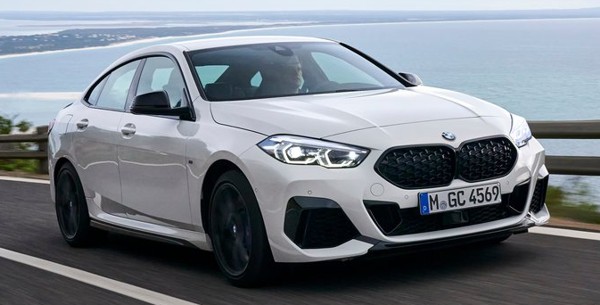
|
|
It
takes BMW 7 years to copy the idea of Mercedes CLA, yet the execution
is poor...
|
|
7 years ago, Mercedes
opened a new class with its CLA. Traditionally, German premium car
makers rarely compete in the C-segment because of lower margins and
stiff competition from mainstream brands. The buyers of C-segment are
cost-conscious, and they are sensitive to space and practicality. This
explain why Mercedes A-class and BMW 1-Series had a hard time to fight
against mainstream family hatches. However, the CLA changed that. It
was conceived as a 4-door coupe, which was hardly a new idea, but this
concept was applied to the compact class and front-wheel-drive
architecture for the first time. This means, while it could be derived
from the A-class platform to save money and lower price point, its
gorgeous, coupe-like appearance enjoyed a premium image – even though
the car drove quite badly. As a result, it sold in big numbers, many of
which in North America where the A-class had no market potential.
It takes BMW 7 years to copy the idea of Mercedes, by now the CLA has
entered the second generation. Slow is not the biggest problem, but the
execution is. The CLA’s success hinged very much on its good looks. The
same cannot be said to the 2-Series Gran Coupe. Put it straight, this
is an ugly car, although it is hardly a news to BMW – we gave the same
comments to the Z3 and Z4, the first two 1-Series, 5-Series E60,
7-Series E65 and plenty of BMW SUVs. Maybe Munich gets used to
criticisms about its ungainly styling, it is not afraid to create more.
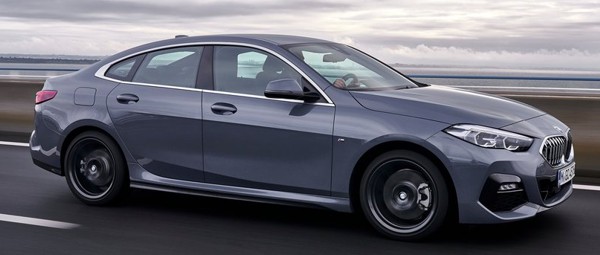
|
|
Dynamically,
it is not the worst BMW, but the success will hinge on design more than
everything.
|
|
The 2er GC has an ill proportion. Its nose is too long, the bonnet is
set too high, and the deck lid is so high and short that it looks as if
taken from an X6. It looks unbalanced. While CLA has a sleeker shape
and a jewel-like nose, the BMW looks just fat and headed by a
cumbersome nose. Even though the roof line is swoopy, there is none of
the aesthetic deserved by something classified as a 4-door coupe. The
graphical elements like double-kidney grilles, headlamps and the 3
bumper intakes are all poorly executed, especially in the M-Performance
model where some of these elements are blackened. They make the front
end looks busy, even outrageous. While taste is very personal, it is
fair to say the car’s styling get overwhelming negative reviews from
motoring journalists all over the world. If styling is a negative asset
to this coupe, how can it sell?
Maybe the substances are better. The 2-Series Gran Coupe share its
underpinnings with the new 1-Series hatchback. Both cars are derived
from BMW’s front-wheel-drive UKL2 platform, which is also the basis for
2-Series Active Tourer, X1, X2, Mini Clubman and Countryman. It has no
relationship with the long-serving 2-Series Coupe though, which is the
last remaining rear-drive BMW compact car. Some motoring publications
insisted the next 2-Series Coupe will continue to be RWD, but I really
doubt. If BMW is willing to invest into a new RWD compact platform, why
not use it on the 2-Series Gran Coupe as well?
Some might say, because the front-drive architecture is more space
efficient. Yes, that might be true. The 2er GC runs a rather short
wheelbase of 2670 mm (like the 1-Series), but it offers 33mm more rear
legroom than the 2-Series Coupe, whose wheelbase is 2690 mm.
Nevertheless, the Coupe is nearly 100 mm shorter overall, as the
front-drive car spends more metal to the front overhang. Give the
rear-drive platform an extra 100mm wheelbase, you will get
limousine-like legroom. Moreover, while the GC offers decent rear
legroom, it is still not comfortable enough to fit six-footers for
anything other than a short trip, because rear headroom is tight. You
cannot have a coupe roofline and good amount of rear headroom
simultaneously. The same can be said to CLA, but in that case at least
you feel it is worthwhile to compromise space for grace.
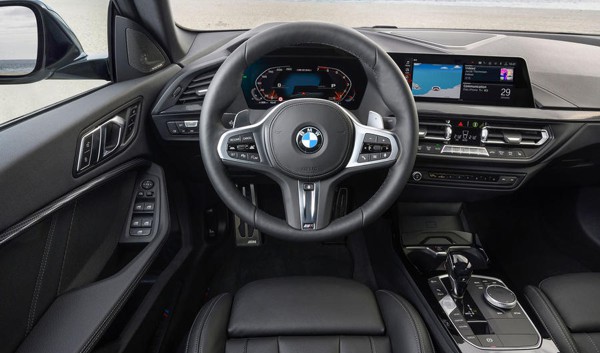
|
|
It
shares the same dashboard with its hatchback sibling, the 1-Series.
|
|
Sharing key dimensions with the 1-Series hatchback means it is easy to
share a lot of interior bits. In fact, the whole dashboard is the same.
For this class, it looks upmarket, if again beaten by Mercedes.
Ergonomics is good. Technology is sophisticated. Quality and materials
are premium. Equipment is abundance, provided you spend extra money.
Apart from a tighter rear seat, this place differs from its hatchback
siblings in a few ways. Its smaller glass area makes the ambience less
airy. Its windows are frameless, like all BMW coupes. Its rear door
aperture is smaller, making entry and exit more difficult. Its boot is
larger, at 430 liters, although it loses hatchback convenience.
The Gran Coupe shares the same powertrains with the 1-Series, too. At
the bottom of the range is BMW/Mini’s 1.5-liter 3-cylinder turbo with
140 hp. It gets the car to 60 mph in 8.2 seconds. Certainly not the one
enthusiasts chase for, but for those people wanting an entry-level BMW
with a coupe presumption, probably quite tempting. Next up is 220d, a
2-liter sequential twin-turbo diesel good for 190hp. Not the most
refined motor in the range, but provides all the torque you need for
effortless overtaking. American buyers will get 228i, a 2-liter turbo
petrol with 231hp. Mated with xDrive mandatorily, it is good for 0-60
in 6 seconds, thus is a solid choice to most buyers. At the top is
M235i, again with xDrive comes standard. Mirroring M135i, the highly
tuned turbo four produces 306hp and 332 lbft of torque. 0-60 takes 4.7
seconds. Compared with the equivalent 1-Series, the 2-Series Gran Coupe
is 45-60 kg heavier, so it is also slightly slower.
As there won’t be a true M-car for the UKL2 platform, M235i xDrive is
as far as it can go. While performance is pretty strong (faster than a
Lamborghini Countach QV to 60 mph, remember!), the sense of excitement
is limited. Its engine starts with deliberate pops and crackles, but
once on move everything calms down. Even at high revs the exhaust note
is subdued, more so than its hatchback sister. No wonder BMW needs to
feed some artificial exhaust noise via speakers. It sounds quite true,
but keen drivers mind. There is a little turbo lag low down, but
generally the engine revs smoothly and eagerly towards its 6600 rpm
redline. The 8-speed automatic comes standard on the M235i works quite
well, so well that I saw at least a couple of UK publications mistaken
it for the great ZF product (sorry, ZF builds only the longitudinal 8HP
or a transverse 9-speeder auto). It is actually an Aisin product. Shift
is slick and responsive enough, although timing is sometimes misjudged.
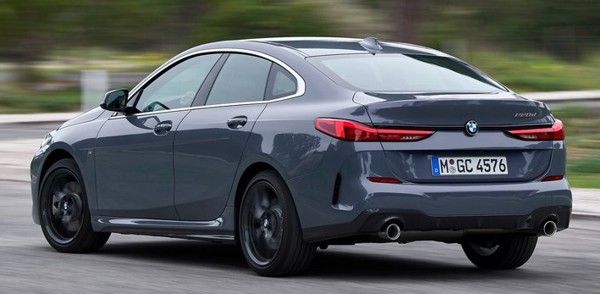
|
|
BMW
claims that 90 percent of buyers will not be aware by which axle this
car is driven. However, what separate a good car and an average car is
usually the last 10 percent.
|
|
The xDrive system has no problem to cope with such power. However, it
again fails to entertain. This is a part-time system, normally driving
the front wheels until electronics detect slippage, then the
rear-mounted multi-plate clutch engages and directs torque rearward.
There is no more than 50 percent torque to the rear wheels, and the car
has a static balance of 58:42, hardly a typical attribute of BMW. The
car resists understeer strongly through its advanced stability control
and brake-based torque vectoring, but when it finally reaches the
cornering limit, it will understeer. Back off will tuck in its nose a
little bit, but no option to push the tail out. It is therefore less
entertaining than a typical rear-drive BMW. It does not react to
lift-off oversteer as keenly as a good hot hatch either, not only
because of the functioning of xDrive but also the conservative tuning
of its chassis. BMW sets its suspension a little softer than the
1-Series, and its steering a bit lighter as well, as a third of all
Gran Coupes will be sold in USA and China.
The M235i is easy and safe to drive quickly. Its ride is generally
smooth. If a bit harsh on poorer surfaces, switching the adaptive
dampers to Comfort mode will solve. Its standard-fitted Torsen front
LSD puts down the power effectively. Although some torque steer can be
detected when accelerating out of corner, it doesn’t affect handling,
just reminds you this is no rear-drive BMW. The steering is also good,
feeling better weighted and more intuitive than some rear-drive BMWs.
Just as BMW claims, 90 percent of buyers will not be aware by which
axle this car is driven. However, what separate a good car and an
average car is usually the last 10 percent.
If the 2-Series Gran Coupe fails, it won’t be because of dynamics, or
practicality, or even price. An ungainly styling would be the most
likely root cause.
|
Verdict:    |
Published
on 26
Feb 2025
|
All rights reserved.
|
|
2025 update (F74)
|
|
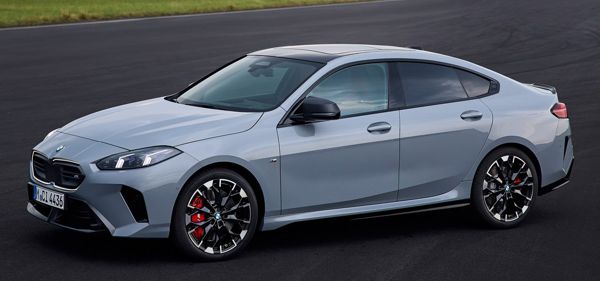
|
|
Mid-life
update pretends to be a new generation.
|
|
Although it gets a new
codename, F74, this is actually a mid-life update as the F44 2-Series
Gran Coupe is just 5 years old. The outgoing car was one of the least
remarkable cars in BMW’s lineup. It was built on the compact
front-wheel drive platform shared with the 1-Series, X1 and Mini, but
pretends to be a sporty car by adopting a “4-door coupe” body shape.
This compromised its looks as well as interior space. In addition to
the poor job done by its design team, it failed to match Mercedes CLA
for showroom appeal. No wonder we rarely see it on street.
The mid-life update is quite comprehensive, including facelift, an
overhauled interior and some engine updates. All the hard points are
unaltered, of course, so the shape of the car remains familiar, which
isn’t as sleek as we had hoped for. However, the design details have
been improved slightly, such as a sharper and more sculpted kidney
grille, slimmer headlights and taillights as well as new bumper designs.
Inside, the entire dashboard is new. It follows the company’s as well
as industrial trend to abandon physical switches for touchscreen-based
control. Conventional instrument pod is gone, replaced with a slightly
curved panel which houses a pair of screens, one for instrument and
another for infotainment system. As a result, the center console and
transmission tunnel have been cleaned up. While the loss of physical
switches does make life more difficult when you are driving, BMW’s
slick and quick-responding infotainment system keeps pain to the
minimum.
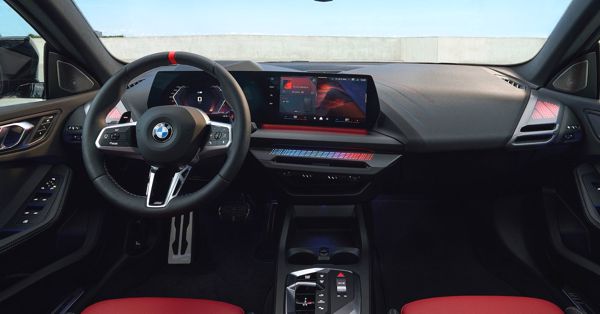
|
|
Overhauled
cabin abandons physical switches for touchscreen-based control.
|
|
The cabin’s build quality is also improved, thanks to good-feeling new
recycled materials and, on M-model, air vents made of real aluminum.
Space remains on the tight side, especially for rear passengers. While
headroom and legroom are okay for those no taller than 1.8 meter, the
rear bench is so narrow that squeezing in a third passenger is mission
impossible. However, that’s no surprise for a car sitting at the entry
level of BMW’s vast family range.
Changes to the engine range gives a mixed feeling. All petrol models
follow BMW’s new nomenclature to abandon the “i” on their badges, so we
have 216, 220 and M235 xDrive Gran Coupe. The first 2 employ the
company’s 1.5-liter 3-cylinder turbo engine, producing only 122 hp and
156 hp, respectively. However, the 220 engine is mated with a 48V
starter-generator
mild-hybrid system, lifting system output to 170 hp, accompanied with a
useful peak torque of 206 lbft. It is therefore good for 143 mph and
0-60 in 7.5 seconds. Mating with a 7-speed twin-clutch gearbox, this
car feels brisk enough on the road while the lighter nose gives eager
turn-in. On the downside, the battery of mild-hybrid system eats into
the trunk, reducing from 430 to 360 liters, which is very small.
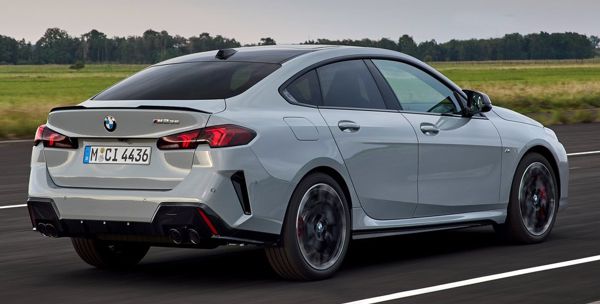
|
|
Powertrain
gives a mixed feeling...
|
|
The range-topping M235 xDrive also employs the new 7-speed DCT instead
of the outgoing Aisin 8-speed automatic. Maybe due to stricter emission
standards or the torque capacity limitation of the DCT, the 2-liter
turbo four loses 6 horsepower and 37 pound-foot of torque, leaving 300
hp and 295 lbft. However, BMW quotes the same 0-60 mph time of 4.7
seconds, thanks to probably the more responsive shift of DCT – the old
Aisin unit was not very good, as mentioned in our last report. The
engine feels potent, but the noise it makes at higher revs is
uninspiring.
The M235 comes with mandatory xDrive which is predictably a part-time
system. In general the car feels heavier at the nose and less keen to
steer than the front-drive 220. The steering does not feel as clean,
although traction and grip are superior. Standard adaptive dampers keep
body motions in check without ruining ride quality. That said, it is
not as interesting to drive as an Audi S3, let alone hot hatches like
Civic Type R, i30 N or Golf R.
After all, the 2-Series Gran Coupe is not a true driver’s car. It is
just a compromised package trying to offer a taste of premium car and
stylish coupe at an affordable price, but fails to excel in either.
|
Verdict:    |
|